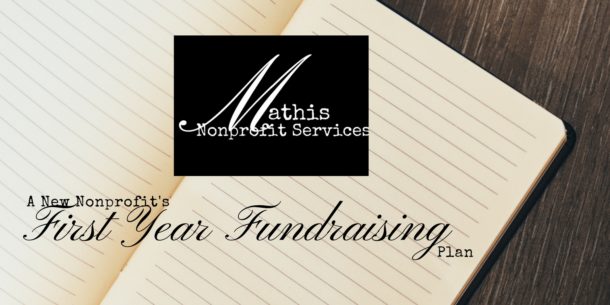The nonprofit industry as a whole hates the word “marketing”. It is a dirty word- never to be spoken. The only thing I can figure is that marketing is associated with for-profit business and nonprofits and their donors don’t like anything connected to the for-profit business. The problem is that no matter what you call it, marketing still needs to be done. Many Founders are coming from the business world and turn donors and other nonprofits off when they use the dirty “m” word. Many times nonprofits roll marketing into fundraising so Fundraising professionals need to be familiar with it. If you have learned the basics of marketing principles through the 4 P’s (Product, Price, Place, and Promotion), then let me translate them into the nonprofit language of the 4 Ds of a donor-centric nonprofit. (These 4 Ds help with donor acquisition and retention too!)
Product Equals Donor Solution in Fundraising
In the business world, a product is the thing you are producing. It is the widget you sell and how you make money- the very reason you are in business. Product translates into the Donor Solution. What problem does your nonprofit solve? Donors want to give something of value to solve a specific problem. This is where the nonprofit connects the people who want to make a difference with those who are on the front lines.
Apply the principle and use it to your advantage:
- What is your big why? Use the Big Why Worksheet at the end of the post to figure out your big why.
- Decide what value you have to offer. This is not a promotional item. It is something like giving youth the tools they need to graduate high school and enter college or the workforce.
- Give them the results of not investing in your nonprofit. How will life be for those you serve if your organization didn’t exist?
Price Equals Donor’s Investment in Fundraising
Price is your revenue in the business world. For a nonprofit, it’s the donor’s investment in the cause. Donors want to know what it will cost them to make a difference. Making a difference can be a monetary donation, parting with an item for an in-kind gift, or the time it will take to volunteer.
Apply the principle and use it to your advantage:
- Try to be specific in your asks.
- Spell out your reasonable expectations.
- Use suggested donation amounts with what you will be able to do with that investment.
Place Equals Donor Convenience in Fundraising
In business, it’s all about location, location, location. In nonprofit work, it’s donor convenience. Are you making donating including online giving easy? Are you eliminating and addressing as many barriers to volunteering as you possibly can? Sometimes a barrier is simply an objection like, “I don’t have the time.” How can your nonprofit address the most common objections to volunteering or giving to your organization?
Apply the principle and use it to your advantage:
- Make it easy to donate and volunteer.
- Provide online giving and flexible volunteer options.
- Make a list of the objections you are hearing. How can you counter those objections? Take action on your list.
Promotion Equals Donor Communication in Fundraising
Donors want two-way communication with your nonprofit. They want to be part of something bigger and to be able to be heard. Some will want more involvement than others but you can find a happy medium. Communication is essential if you want to keep your donors.
Apply the principle and use it to your advantage:
- This is the single most effective donor retention strategy any nonprofit can put into place.
- Send out newsletters periodically telling your supporters what is happening in the organization and the impact you are having on one person at a time.
- Send out appeal letters twice a year.
- Send out surveys to your donors.
- If you are on social media, use it to communicate your mission, vision, and impact.
- Invite donors to interact with your organization in person, in an email, on the phone, and on social media.
- Give top notch customer service.


 Most nonprofit leaders lay awake at night trying to figure out how to fund their mission.
Hi! I'm Alesha.
I teach sustainable fundraising in a way that they can take action today so they can serve their clients.
I can help you move from just getting started funding your new nonprofit to gaining confidence in your fundraising and building relationships to knowing what works for your organization and looking at the infinite game when it comes to funding. I’ve worked with nonprofit Founders and written the book I HAVE MY 501(C)3! NOW WHAT?!? Your Blueprint to Starting Your Nonprofit Without Being the Sole Funder that lays the foundations for funding in a new nonprofit.
I’ve worked in Development (Fundraising) Departments in large organizations and I know the no cost, low-cost methods they use to bring in funding. I bring those sound strategies to the nonprofits I serve.
Most nonprofit leaders lay awake at night trying to figure out how to fund their mission.
Hi! I'm Alesha.
I teach sustainable fundraising in a way that they can take action today so they can serve their clients.
I can help you move from just getting started funding your new nonprofit to gaining confidence in your fundraising and building relationships to knowing what works for your organization and looking at the infinite game when it comes to funding. I’ve worked with nonprofit Founders and written the book I HAVE MY 501(C)3! NOW WHAT?!? Your Blueprint to Starting Your Nonprofit Without Being the Sole Funder that lays the foundations for funding in a new nonprofit.
I’ve worked in Development (Fundraising) Departments in large organizations and I know the no cost, low-cost methods they use to bring in funding. I bring those sound strategies to the nonprofits I serve.